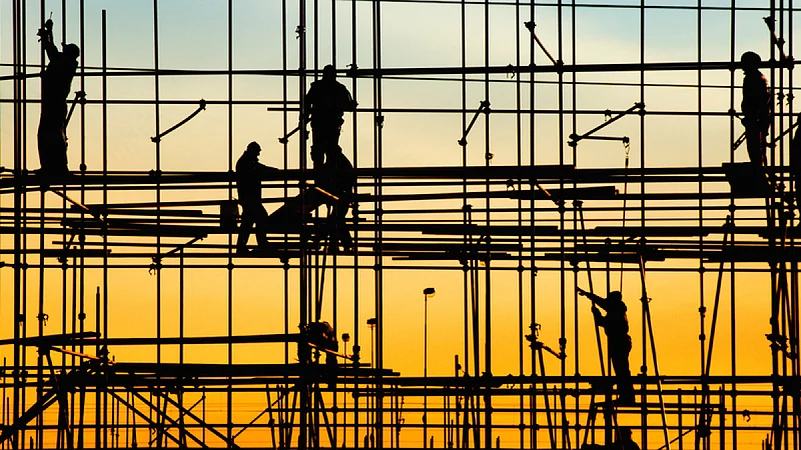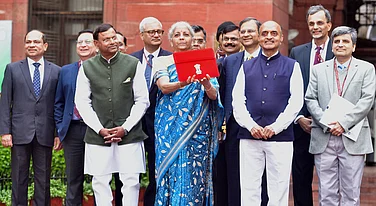“Home, schools, hospitals, roads, power stations… These are more than just constructions. They form the backbone of functioning lives. And they are critical for sustaining peaceful, prosperous lives.” These words by Dr Jens Wendel, UN’s special advisor on reforms, could not be more apt in the context of India.
In India, infrastructure is at the core of fundamental human liberties, improving quality of life as well as fulfilling economic aspirations for a billion people. Here, rail and roads not only move people and goods from one place to another, but they also move people out of poverty to prosperity. India as a nation aspires to become the third largest economy in the coming years.
By the end of hundred years of Independence, it is projected that we will be a $26 trillion economy. This long-term vision of economic growth and Viksit Bharat will firmly stand on building modern infrastructure and robust transportation systems.
The interim budget announced in February 2024 indicated the government’s resolute commitment in this direction. In the last four years, the capital expenditure outlay for infrastructure has tripled to Rs 11.11 lakh crore, or 3.4 per cent of GDP. Focused policy initiatives like Pradhan Mantri Awas Yojana, Smart Cities Mission, Bharatmala, Sagarmala, Parvatmala, and Amrit Stations redevelopment scheme have helped in bridging connectivity and offering affordable housing and services.
Linked with the infrastructure investment, introduction of Vande Bharat and Amrit Bharat trains, the UDAN initiative, NaMO rapid rail, metro trains etc. have enhanced regional connectivity and travel experience of common citizens.
However, this development pathway requires further recalibration to achieve desired outcomes.
Focus on soft infrastructure
lmproving digital and technology capabilities for public agencies, especially in project monitoring, shall bring in greater execution certainty. Similarly, effective implementation of national logistics portal (NLP) and streamlining customs’ digital ecosystem will go a long way in eliminating uncertainties still prevalent in the entire logistics value chain.
Building Infrastructure capacity ahead of demand.
Only budget allocations are not enough to achieve our developmental aspirations. Equally important is augmenting the execution capabilities of implementing agencies to deliver projects on time. We must invert the vicious cycle of infrastructure demand or congestion driving capacity creation. In the railway sector, a new start has been made with three major economic corridors announced in the interim budget to add 40,000+ km of new track. It is critical that these must be delivered on time and ahead of projected demand.
Capacity and Quality of Infrastructure must go hand in hand.
Another important dimension would be improving the quality of infrastructure for every Indian. This in turn depends on following:
Improving Quality of Infrastructure service: Investment in long lead greenfield linear infrastructure must be coupled with improving the quality of existing infrastructure. These include better transport network management to achieve minimum committed speeds especially on rail, fast tracking delivery of marquee programs like rail station redevelopment or eliminating toll gates through contactless tolling at highways and improving safety through adoption of technologies like rail Kavach etc.
Better Maintenance: We have a strong track record of building infrastructure but not so much in maintaining them. Scaling up private sector participation as well as building capabilities with public agencies towards sustained infrastructure maintenance and focusing on quality infrastructure service delivery is paramount to provide balanced economic growth.
Shift from isolated planning to integrated planning
Lastly, it is equally crucial to focus on integrated planning covering all modes of infrastructure projects. There has been significant progress in project planning on PM GatiShakti National Platform linked with appraisal at Network Planning Group. However, there is still a significant scope of integration and collaboration. There is a critical need for shift from legacy approach wherein various modes especially road and rail plan in isolation and may compete for same traffic or transportation demand rather than complementing each other and promoting multimodality.
This must change towards integrated corridor approach to infrastructure planning that works on a more rational basis by integrating all infrastructure projects in coordinated manner to create the required capacity in most efficient and sustainable manner.
The scale of these challenges is significant though not insurmountable. India’s pathway to developed economy is deeply ingrained into enabling right capacity and quality of infrastructure, delivered on time. Timely reforms, emphasis on integrated planning coupled with accelerated development of digital & tech driven capabilities towards project monitoring will bring in much required execution certainty and capability. We must realise that while a beginning has been made, we have a long way ahead.
(Anurag Batra is partner at Deloitte India and Ranmaya Roul is consultant at Deloitte Touche Tohmatsu India. Views expressed here are personal)





















